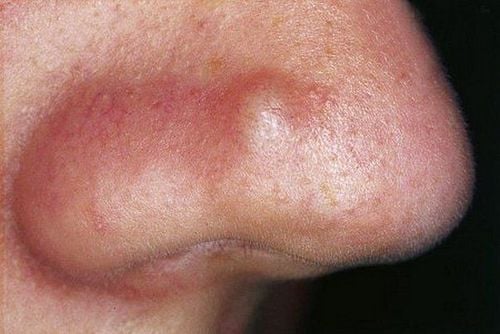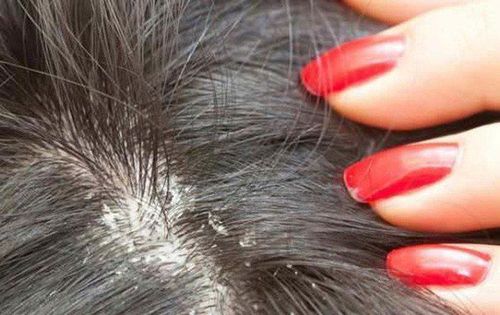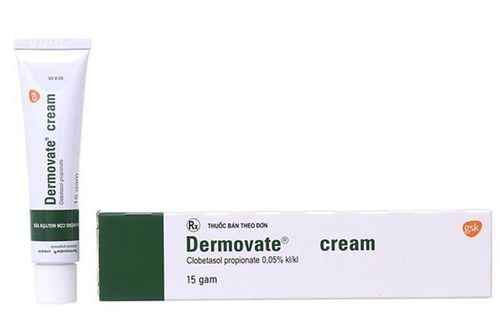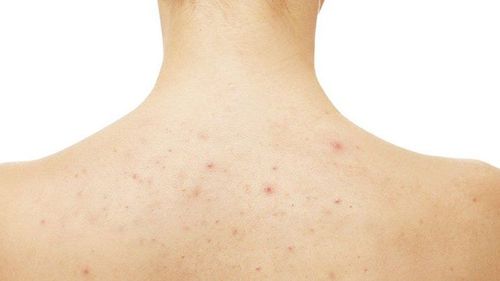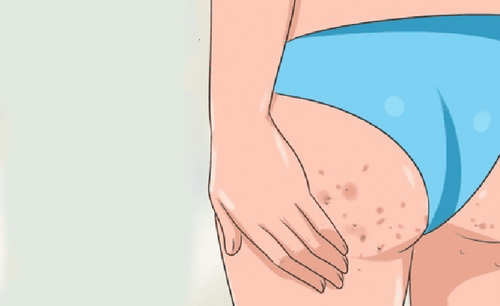The article is professionally consulted by Specialist Doctor Level I Tran Van Sang – Dermatologist – Department of Outpatient & Internal Medicine – Vinmec Da Nang International General Hospital. Dr. Sang has 18 years of experience in the field of dermatology.
Folliculitis commonly occurs in moist areas of the skin, such as the armpits, groin, buttocks, arms, back, and thighs. Although not a dangerous disease, folliculitis significantly affects patients' quality of life. It is particularly easy to contract, tends to recur, and its treatment is often prolonged.
1. What is folliculitis?
Folliculitis is a relatively common skin condition caused by bacterial, viral, or fungal infections in hair follicles. It can occur in any hair-bearing skin area, including armpit folliculitis and also folliculitis in scalp, arms, and legs, and is often triggered during hot seasons due to sweat-induced skin dampness or poor hygiene.
Folliculitis damages the skin, presenting as pustules or papules at hair follicles with surrounding redness and occasional embedded hairs causing itching. The red spots around the infected area are small but densely packed, leading to aesthetic and functional disturbances. Common areas include the scalp, face, armpits, pubic region, and the extensors of the limbs. Burst pustules leave small crusted spots, which can develop into boils or, in severe cases, carbuncles or subcutaneous cellulitis. The disease is often itchy and prone to recurrence.
2. Symptoms of folliculitis
Folliculitis is categorized based on the depth and extent of inflammation. Specific symptoms for each type are:
- Superficial folliculitis (follicular mouth inflammation): This localized inflammation at the follicular opening is commonly found on the scalp or limbs. It is caused by Staphylococcus aureus or contact with chemicals blocking follicular openings. It primarily affects children and individuals using corticosteroids long-term. Symptoms include conical pustules the size of a pinhead with a yellow center and surrounding redness, causing itching or burning. These pustules appear in batches lasting 7–10 days and do not scar. In some cases, the condition may persist and become chronic.
- Deep folliculitis: This involves inflammation extending deeper into hair follicles, causing more significant damage than superficial folliculitis. Pustular lesions do not rupture but flatten and crust over, leaving depressed scars. Patients experience pain in the affected area.
- Boils: Acute follicular inflammation with necrosis caused by Staphylococcus aureus. Boils can appear singly or in clusters and extend to surrounding skin, causing necrotic tissue and forming greenish-yellow pus cores. Burst pus cores leave deep ulcers, which heal with scarring. This condition is common in young males and often occurs on the face, neck, arms, and buttocks.
- Carbuncles: These are clusters of adjacent inflamed follicles caused by Staphylococcus aureus, extending into connective and subcutaneous fat tissues. Common in diabetics, malnourished individuals, and those with heart failure, initial symptoms include an inflamed, raised, smooth patch of skin with pain on palpation. Over 3–5 days, the lesion enlarges, reaching up to 10 cm in diameter, softening, and forming pus, which drains through follicular openings. Necrosis may result, forming deep ulcers with pus at the base, causing severe pain, fever, fatigue, and appetite loss.
- Sycosis: A form of chronic or subacute follicular inflammation caused by Staphylococcus aureus or predisposed skin types. It recurs in areas with dense hair growth, such as eyebrows, scalp, chin, and genital regions. Symptoms include progressive pustules forming eczema-like patches, with grouped pustules and eroded skin. The lesions are elevated, well-defined, and may drain pus upon pressure, leaving dilated follicles.

3. Why is Folliculitis Persistent and Recurrent?
Although not dangerous, folliculitis is persistent and prone to recurrence due to persistent triggers that are difficult to eliminate. Key reasons include:
- Sebaceous gland disorders: Overactive sebaceous glands or thickened sebum block follicles, preventing hair growth. Dead cells accumulate, sealing follicles and causing inflammation. Additionally, folliculitis may arise from acid imbalance, increasing skin dehydration and bacterial proliferation within follicles. This genetic predisposition from oily-skinned parents makes the condition hard to eradicate, explaining its chronic and recurrent nature.
- Internal factors: Immune deficiencies, neurological disorders, metabolic issues, endocrine diseases, gastrointestinal conditions, or diabetes increase folliculitis risk. Without treating these underlying conditions, folliculitis will persist, making it challenging to resolve and prone to recurrence.
- External triggers: Hot, humid climates, pollution, and dust exposure significantly increase folliculitis risks. These uncontrollable factors contribute to its chronicity and recurrence.
- Bad habits: Shaving, hair plucking, waxing, wearing synthetic clothing, prolonged corticosteroid use, extended antibiotic use, and occlusive dressings promote folliculitis. Without lifestyle changes or proper treatment, the condition will persist and relapse.

4. Is it hard to treat folliculitis?
Folliculitis is not hard to treat. Patients must see a doctor, have tests done to determine the cause of the disease, and use appropriate medication.
Folliculitis is persistent and often recurs due to favorable factors such as genetics, environment, or inappropriate living habits. In addition, many patients have folliculitis relapses due to stopping medication halfway or not following the correct treatment regimen. Complications can become more severe, causing boils, carbuncles, and subcutaneous tissue inflammation. At that time, the treatment of the disease will be more difficult. Therefore, patients need to improve their living environment, change their living habits to reduce the risk of disease, and take medication as prescribed by the doctor to completely treat the disease.
Folliculitis treatment for each specific type of folliculitis:
- Superficial folliculitis: Apply antiseptic solution to the affected area;
- Deep folliculitis: Apply antiseptic solution to the widespread inflamed area, combined with oral antibiotics;
- Boils and carbuncles: Use local and systemic antibiotics. When there is pus, incision, and drainage are needed;
- Ding beard: Combination treatment with multiple parenteral antibiotics;
- Sycosis: Antibiotic treatment combined with histaglobin and staphylococcal vaccine.
In cases of recurrent folliculitis, it is necessary to find the cause, detect bacterial nests in the nasal cavity, anus, etc., and avoid scratching the skin due to shaving. Patients should not use drugs of unknown origin to avoid spreading the damage, making the disease worse and difficult to cure completely.
5. How to prevent folliculitis from recurring
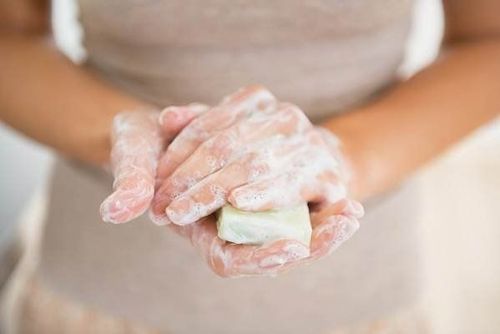
Each person needs to proactively prevent disease recurrence by following these measures:
- Maintain hygiene and keep skin dry, especially in summer. Use oil-reducing soaps to keep pores clear.
- Protect skin from irritants like soaps, chemicals, and cleaning agents.
- Avoid tight hats or clothing and opt for breathable cotton fabrics.
- Clean skin thoroughly before shaving and avoid skin scratches.
- Refrain from plucking nose or armpit hairs.
- Reduce carbohydrate and sugar intake, increase B vitamins, and stay hydrated for healthy skin.
- Consult a dermatologist at the first sign of folliculitis and adhere to treatment protocols to prevent relapses
Folliculitis is a disease that is difficult to cure completely, persistent, and easy to relapse. Therefore, everyone needs to pay attention to preventive measures to reduce the risk of contracting this disease. When unfortunately infected with the disease, the patient needs to cooperate with the treating doctor to cure the disease completely, avoiding relapse.
At Vinmec International General Hospital, there is currently a package of examination and consultation for the treatment of atopic dermatitis for all customers of all ages. Customers at risk such as allergic constitution, affected by environmental conditions such as weather, climate, humidity, ... will be examined and performed tests including:
- Dermatology Examination
- Perform tests such as: IgE quantification, fresh fungal microscopy, specific IgE quantification for respiratory and food allergens (Panel 1 Viet), Rida Allergy Screen test (panel 1)..
To arrange an appointment, please call HOTLINE or make your reservation directly HERE. You may also download the MyVinmec app to schedule appointments faster and manage your reservations more conveniently.

